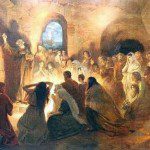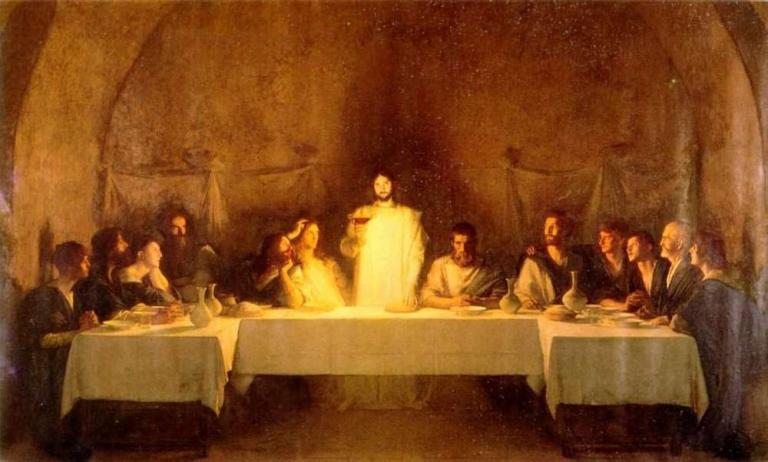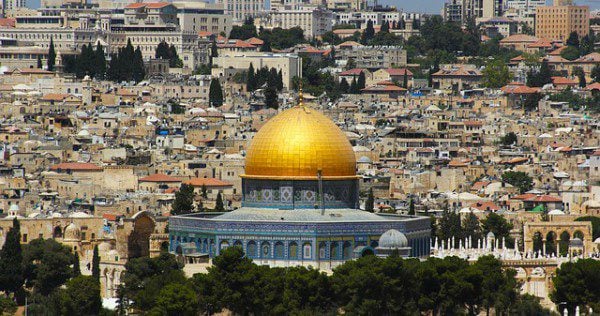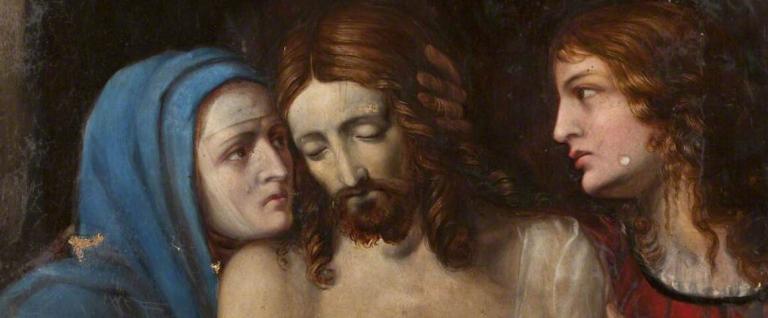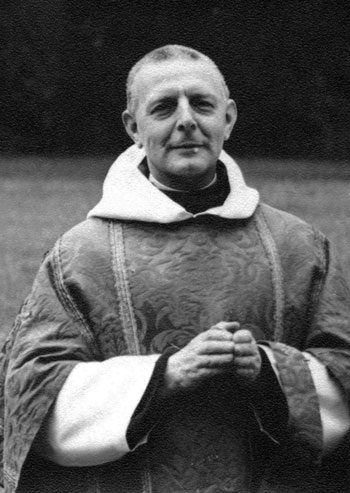 More from Dix, The Shape of the Liturgy . . .
More from Dix, The Shape of the Liturgy . . .
Chap 11: The Sanctification of Time
As the church became accepted by the Empire in the 4th century, and then in fact became the directing conscience of the merging civilization (Christendom), the church came to feel at home in time, and the eschatological emphasis in the Eucharist faded. It ceased to be the rite which manifested the eternal consequences of redemption by transporting its partakers from the world of time into the Kingdom of God and the World to Come. Instead, it came to be thought of as the representation of the historical process of redemption, of the historical events of crucifixion and redemption by which redemption had been achieved. The pliable idea of anamnesis was there to ease the transition. 305
The English Puritans’ crusade against all forms of sensuous beauty in worship has had more effect than we realize on our notions of worship in the early church. [For Dix] “Puritanism” is the theory that worship is a purely mental activity, to be exercised by psychological attention to a subjective emotional or spiritual experience. All external things which might distract from this experience have no rightful place in worship. The principal defect of this view is to suppose that words alone can express or stimulate the act of worship. 312
Over against this Puritan theory is the “ceremonious” conception of worship, which sees worship as not purely intellectual or affective but something in which the whole person—body and soul, aesthetic and volitional and intellectual—must take part. It regards worship as an act as much as an experience. 312
The elaborate ceremonial worship of the Jerusalem Temple was never condemned on those grounds by our Lord. The apostles continued to frequent it until they were driven from Jerusalem. The second-century Xns still found it natural to think of their worship in terms of the ceremonious worship of the Temple. Xn corporate worship in the 2nd c. centered in the sacraments. What is striking about the pre-Nicene liturgies is its directness, its insistence on the external sacramental action as what really mattered, and its exclusion of all devotional accretions which would stimulate or satisfy a subjective piety. This is the reverse of the Puritan theory, where the subjective experience, not the external action, is always the important thing. 313
Music and painting, incised chalices of precious metal, and even sculpture, can all be proved to have been parts of worship before 250 AD by literary evidence or actual remains. It is significant that in John’s Revelation, there is worship “in spirit and in truth” yet also with majestic ceremonial, with all the external accompaniments of lights and incense. 314
Of course there is always the danger of formalism, mere ceremonialism replacing true surrender of heart and will. But the Hebrew prophets denounced this without also recommending the end of all ceremony. And this danger can be found even in Puritan worship. 314
The serious results came with the disappearance of the people’s offertory in the East during the 4th c., and the decline of lay communion. The corporate action of the church disappeared, and what was left was a rite conducted chiefly by the prayers of the clergy, in which the people still made a few responses but otherwise had little part. 319
The organization of the divine office at Jerusalem—church services at the times of monastic prayers–was an achievement of Cyril in the 4th c. It brought into public worship for the first time the monastic ideal of sanctifying human life as a whole and the passage of time by corporate worship. It was probably also Cyril who originated the “proper” of saints and the “proper” of seasons of the church year. 329, 334
The change of public worship from Saturday to Sunday was already an accomplished fact when Paul wrote 1 Cor 16.2 in AD 57. 337
A fully developed doctrine of purgatory was accepted in the Acts of the African martyrs Perpetua and Felicity (c. 200) of which hints are to be found in the baptisms for the dead in 1 Cor 15.29 and our Lord’s preaching to the dead in 1 Pet 3.19 [needless to say, there are great debates over the meaning of these passages]. Tertullian and others speak of the “annual oblation” of the eucharist on the anniversary of the death of departed Xns, which Cyprian calls a “sacrifice for their repose” (Ep. 1.2). 344-45
In sum, the church’s liturgy is an entering into Jesus’ liturgy. In the synaxis the Church proclaims the gospel to herself and, so far as it will listen, to the world. She does this through the readings, the announcement of the Word, and by the explanatory sermon of her prophetic teachers, under their bishop. The Church speaks not as one arguing or speculating but as a witness or messenger delivering a message which is not his to change or invent, but only to deliver faithfully in the Spirit of the sender.
Then the Church enters as His Body into the liturgy of His Body, in the eucharist which is the anamnesis of Him, the Sacrificed. She takes bread and a cup and gives thanks and breaks and distributes, entering into, not merely repeating, His own act. The Church thereby brings herself and all her members into the “coming” of the Kingdom of God, which comes fully and perfectly in Jesus. That is the Eucharist of the first four centuries. 393-94

